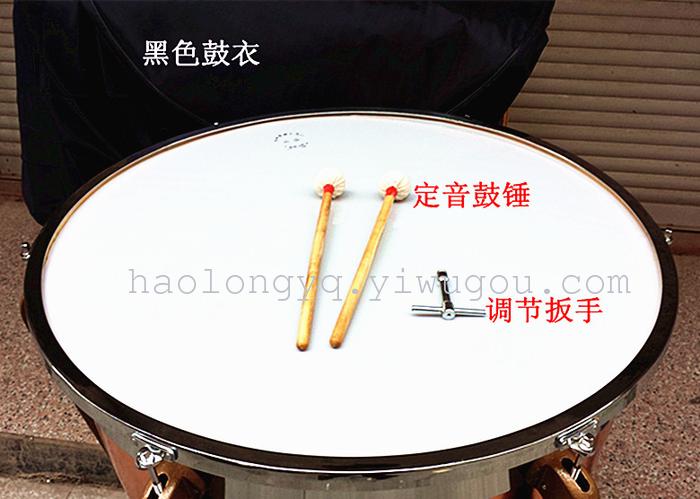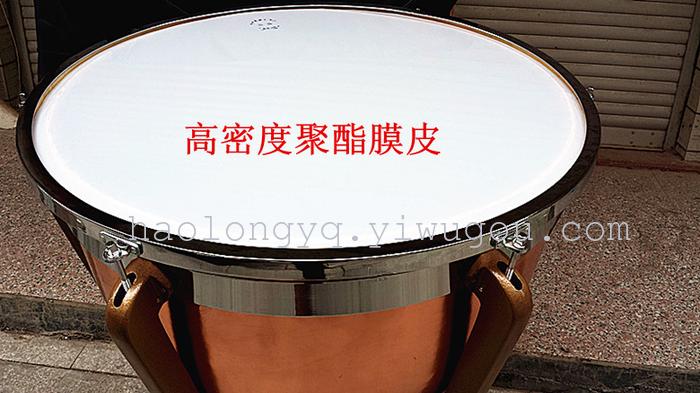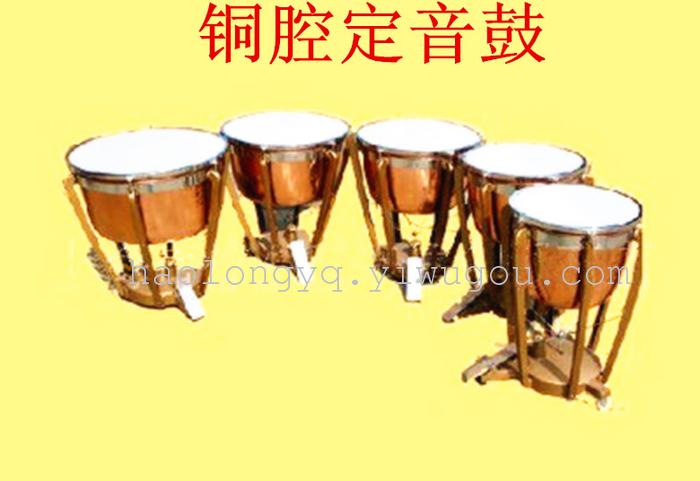Specification: 1st 32 inches"2号29寸 3号26寸" can be translated as "Size 29 inches for No. 2 and Size 26 inches for No. 3".4号 23寸 5号 20寸
The tuning of the timpani is done by hand, but it is no longer widely used today. In contrast, modern mechanical devices that form pedal-style tuning timpani are becoming increasingly common, as they offer the advantages of easy tuning and fast tuning speed.The tuning construction of modern timpani has the following forms: 1. Chain Tightness2. Rotational type3. Crank TypeThey all have different tuning mechanisms. Drum with pedals are controlled by the use of the pedals, but there are many different forms of pedals. Generally, the different types of mechanical pedals are due to the differences in manufacturers, and they are mostly chosen based on personal preference. The chain-type mechanical device and the hand-controlled device are similar. All the screws on the edge of the drum are controlled by a chain, just like the chain of a bicycle, which causes all the screws to operate simultaneously. The rotating type is to install the drum seat on a central axis with grooves, and as long as the instrument is rotated left and right, it will change the tightness of the drum skin, and naturally, the pitch of the sound will change. The single-rocking type and the chain-type timpani are very similar, that is, the tightness of the drum skin is controlled by a rocking handle, which means that all the bolts will be relaxed or tense due to the rocking handle.
Timpani are primarily used in symphony orchestras as part of the percussion section. The role of the timpani is to bring the piece to a climax and to add interest to the music during performances. Timpani are typically used to emphasize the rhythm structure of a piece, and they are often played with two or four timpani in the orchestration. The main difference between modern timpani and other percussion instruments is that timpani can change pitches very quickly, and a single drum can produce different pitch effects. Modern timpani mainly come in five different sizes ─ 32", 29", 26", 23", and 20".
Belonging to the single membrane percussion instrument, the cost is expensive. The tuned drum can produce fixed frequency (i.e., pitch) sounds and can change the pitch within the five-degree interval. The tone is soft and rich, the volume can be controlled, and different forces can express different musical content, sometimes even directly playing the melody. The playing method is divided into two types: solo and rolling, solo is often used for rhythmic accompaniment, and rolling can imitate thunder, and the effect is realistic. As a color percussion instrument, the rich expression of the tuned drum is far beyond that of ordinary percussion instruments.















